Browse using the new Vinous website now. Launch →
Printed by, and for the sole use of . All rights reserved © 2015 Vinous Media
Chile: Thinking Outside The Box
BY JOAQUÍN HIDALGO | JUNE 06, 2023
Apalta, Chile, one March morning. The veil of mist shrouding the mountain ridge that lends the region its name has only just lifted. Up on the slopes, the native forest perfumes the air, with its litre, peumo and quillay trees still vividly green despite the dry season. Lower down, a patchwork of vineyards crisscrosses the reddish soil.
This relatively small Denomination of Origin is a microcosm of everything Chile has to offer. Major wineries like Montes, Neyén, Clos Apalta, Carmen and Ventisquero have bases here. However, there are also several small but venerable concerns, such as those run by the Cánepa, Muñoz and Quijada families. They were already well established in the early nineties when the region began Apalta’s meteoric rise to the top of the pile, making its name with a series of excellent reds.

The topography of the Cordillera de la Costa varies from the gentle slopes of Itata to sheer ravines like the one seen in the photo in Cachapoal. In the background, we see the mountain’s southern slope, the cooler side, which hosts a lush, green native forest even at the end of the dry season.
Amid the vines, several new hotels and residential neighborhoods are also popping up; a rural setting with good connections to the outside world attracts developers. The wine industry is largely responsible for said boom across this natural amphitheater in the Central Valley.
That March morning, toward the end of my trip, one thing became clear: anchored by longstanding tradition in some areas while experiencing rapid change in others, the industry is looking for a path that meets everyone’s needs, including the part of Chile in touch with the outside world with a thriving export business and the part more focused on grapes and styles suiting the domestic market.
I asked what might sound like a stupid question to Aurelio Montes, one of the leading figures in Chilean wine, who, at the age of seventy-four, has now overseen fifty-two harvests and is the president of Wines of Chile: “With all your experience and having seen how Apalta has transformed in recent years, where do you think the future of the wine business in Chile really lies?”
Montes hesitated for a moment.
“I don’t really know how to answer your question,” he said. “But I’ll tell you something that a Franciscan monk friend of mine told me many years ago, something that’s making a lot of sense to me these days: ‘In life, success, money and happiness are like butterflies. The more you chase them, the further they fly away, but if you only stand still, you might find that they come to land on your shoulder.’”
I felt he wasn’t talking to me but to a much larger audience, the entirety of the Chilean wine industry.

The aging room at Bodega De Martino one February afternoon. In addition to used barrels, large and small, the winery has a collection of casks and foudres that can be seen behind the barrels. The trend in Chile today is heading toward a more rational use of oak.
Several New Paths
Chilean producers are increasingly concerned that their wines are beginning to lose the wider public’s interest. You might think they’re right until you take the trouble to taste them in detail. While some are committed to following trends that will open up new markets, more interesting things are happening outside the glare of the spotlight.
This is why the butterfly metaphor seems so apt.
After traveling approximately 2,800 miles, tasting over a thousand wines and visiting around forty wineries and vineyards for this report, I believe that the most exciting wines in Chile are made outside the commercial box. Some are firmly plugged into the rat race, understandably trying to hit the sales sweet spot, but others patiently study the different variables existing in their terroirs, trying out new styles and ideas that might open up new flavor horizons.
Inside that box, we find the ripe, indulgent reds that Chile sells en masse in the $12 price range and below. Outside that box, we find dry, vibrant whites, silky, taut reds of the coast, and other profound, fairly concentrated reds from the Secano interior dry farming area that are anything but sweet. These are wines that offer distinctive, alternative flavor palettes, wines that seasoned drinkers will enjoy discovering.
This is my fourth Chile report for Vinous. Over that time, I have developed a more nuanced knowledge of the different regions and also met many producers who are following their convictions to introduce new styles and profiles. Overall, it is my belief that the wines of Chile are being improved by these new ideas and approaches, and this is reflected in my scores. Another contributing factor is that many of the wines this year came from a cool year, 2021, and it had a wonderful effect: there are a number of bottles that these revamped philosophies that are very much worth trying.
Below, I delve further into these trends by region.
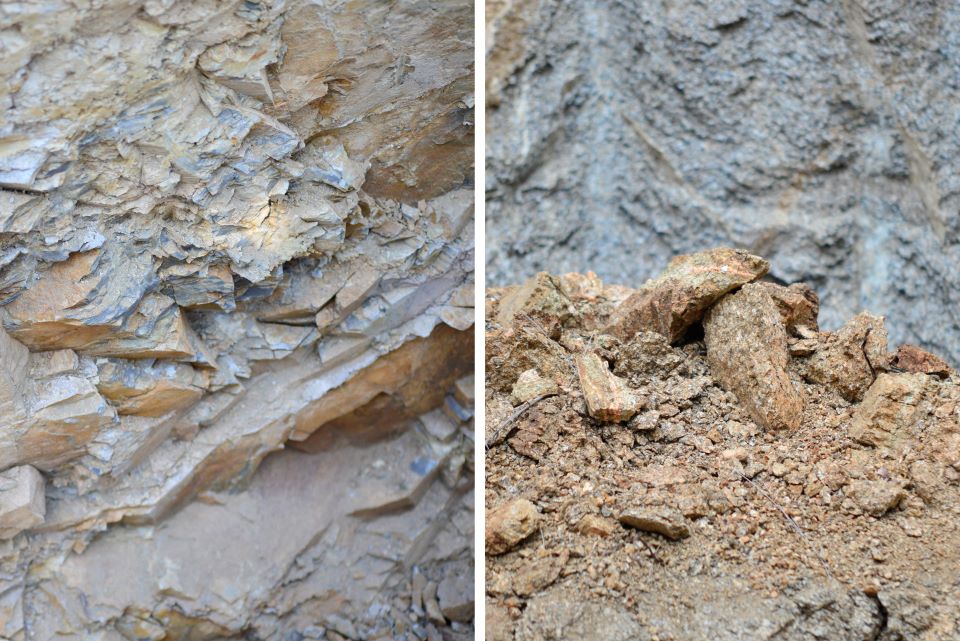
The soils of the Cordillera de la Costa range
are rich in meteorized granite, as seen at the Belén vineyard belonging to Viña
Morandé in Casablanca (right). In Chile, these soils are known as maicillo.
However, the range also features soils rich in slate and schists, as seen in
this fragment (left) from the unusual metamorphosed volcanic soil at the La
Cornellana vineyard belonging to Viña La Rosa in Peumo.
Maule, Itata and the Secano
The Maule region exemplifies this concept. Located about 120 miles south of Santiago, it boasts the largest area under vine in Chile, about 52,800 hectares, a third of which are dry farmed. With 20 Denominations of Origin, Maule encompasses a range of different settings, from the rich, fertile valleys of Curicó to the clay slopes of the Secano region. In terms of flavor, they’re worlds apart.
One morning, I tasted fourteen VIGNO wines produced by members of the Viñadores de Carignan Association, who harvest from old, dry-farmed vines almost exclusively located in the communes of San Javier de Loncomilla (8,700 ha) and Cauquenes (7,600 ha). Both are part of the Secano interior area on the Cordillera de la Costa mountain range, an unirrigated zone. It only used to rain there in good years – now only very good years see rain. This is why old vines are so important. Carignan produces reds with sour cherry aromas and tartly acidic, tongue-tickling palates with refined tannins.
After that morning, I tasted many wines from parts of Maule where the climate and soils favor greater concentration, which achieved their best expressions in 2021 when the weather was cool. These extreme Bordelais reds include the 2019 Cabernet Franc Hacedor de Mundos, the 2021 Field Blend Undugarra and the 2022 Cabernet Sauvignon Baettig Los Compadres.
That same day, in the afternoon, I climbed up to the Commune of Empedrado (51 ha) in the coastal Secano. It’s a mountainous region with more significant rainfall, and proximity to the sea ensures a cooler climate. At the vineyard with a series of terraces chiseled out of the granite belonging to Miguel Torres, I had a vertical tasting from 2012 to 2019 of Pinot Noir Escaleras de Empedrado, whose forthright palates are an excellent example of the effects of the cooler climate. Still, in Empedrado, I tasted a few skinny País and Carignans that deliver precise, fruity flavor made by Garage Wine Co. These came from the Truquilemu Vineyard, which is tilled by horse and boasts plants that are often older than the people tending to them.
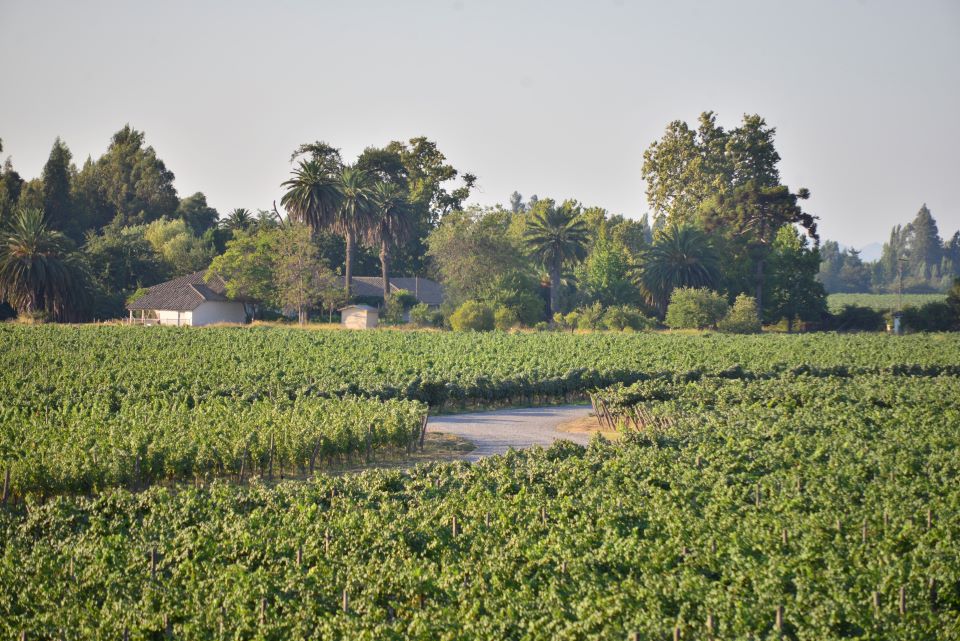
A plain of deep clay
soils in Colchagua, where the Tinguinirica River flows into the Chimbarongo
estuary. This is where the Viña Los Maquis vineyard is planted. This year,
employing less severe methods than the previous season, the winery took their Cabernet
Sauvignon and Franc to another level.
A Mountain Range Worth Visiting
San Javier de Loncomilla, Cauquenes and Empedrado are part of a larger area that is engine room to many of the new wines of Chile: the Cordillera de La Costa mountain range, where there are granite-rich soils and a variety of different exposures due to the variable topography. Here the climate is kept cool by the Humboldt Ocean Current. From Biobío and Itata to the south, up through Maule, Leyda and Casablanca and as far as Limarí, the Current affects 450 miles of coastline between Concepción and La Serena. Along this long stretch, the biome changes from perennial forest to arid desert, but the soils and temperatures remain consistent.
Perhaps “engine room” is a bit of an exaggeration. Maule, Itata and Biobío are rural areas where vines have been grown since the 18th century, especially the País variety. Also known as Mission, Criolla or Listán Prieto in the USA, Argentina and Spain, respectively, País – as it’s generally known in Chile – arrived in colonial times. Rustic and sturdy, it can handle the severe conditions found in dry farming areas as its roots delve deep.
In Chile, 10,500 hectares are planted with País, especially in the regions mentioned above, and producers are experimenting with different styles. Some, like the Almaule collective, are producing light, fruity reds, not unlike scruffy versions of Pinot Noir. Others are milder and more precise, including the 2022 País Granítico A Los Viñateros Bravos and the 2022 País Viejo Bouchon. Some are more potent and liqueur-like such as the 2021 País Águila de Itata and the 2021 País Rojo Paraíso. While many Países are too tannic to catch the eye, those that manage to keep the tannins in check tend to stimulate one’s curiosity and saliva glands, establishing a new but recognizably Chilean profile.
From Maule to Biobío, people like to talk about honoring heritage while the native forest lends the wines notes of boldo herb and garrigue. However, things are different further north, where the lack of rainfall is a defining factor. Here, the skillful, precise expertise unlocks attractive terroirs and pure aromas.
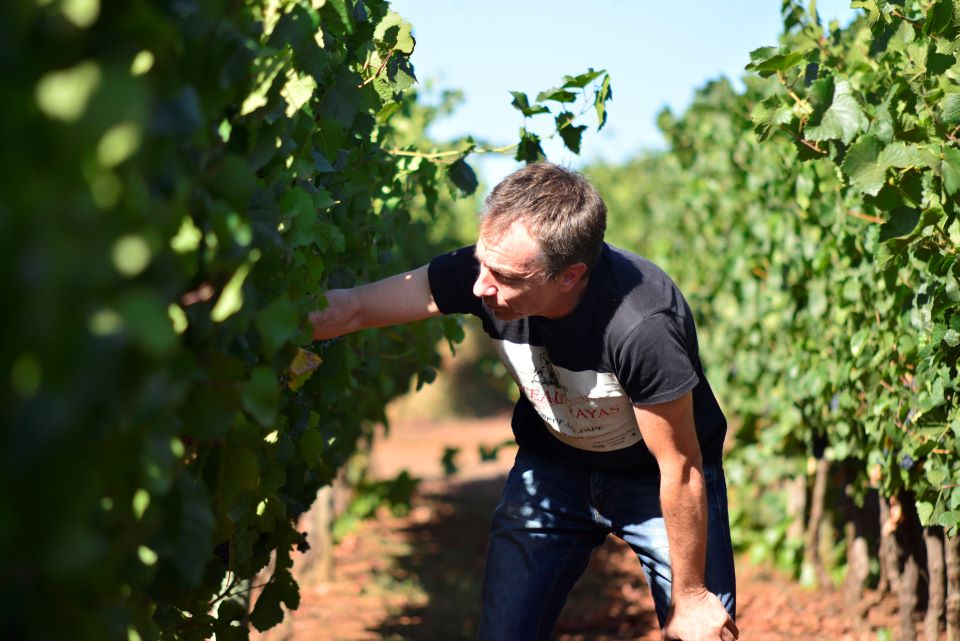
Oenologist Francisco
Baettig is pictured at the Los Primos vineyard in Traiguén, fifty miles from
the town of Temuco. This is a cool area where Pinot Noir and Chardonnay present
a new subtle range of qualities, as seen in the wines produced by Baettig, Aquitania
and Tayu. The soils are primarily volcanic.
Coastal Whites
The valleys of the Cordillera de la Costa stretch west and north of Santiago, offering a distinctive flavor profile. Casablanca is the oldest and, therefore, best-known region; planted since the 1990s as a mainly white terroir (5,000 hectares overall, of which 3,800 are whites). The region branches out into five valleys; the Las Dichas sector to the east is the coolest, while La Vinilla to the west is the warmest.
Casablanca is currently going through a process of renewal. The lack of water in recent years left its mark on the poor genetic stock of Pinot Noir and Chardonnay, which are currently being replaced. I saw good examples of this in Campo Belén, which belongs to the Morandé winery, and in the hills around Casas del Bosque. In contrast, the Sauvignon Blancs (2,200 ha) offer mostly citrus and rue profiles with tropical hints. Good examples are the 2022 Sauvignon Blanc EQ, the 2022 Sauvignon Blanc Casas del Bosque La Cantera and the 2022 Sauvignon Blanc Ritual.
Not far from there, Leyda accounts for a fifth of the vineyards of Casablanca, with about 1,000 hectares under vine. It was planted in the latter half of the 2000s with better stock and more precise techniques. Leyda overlooks the Pacific Ocean and is all the better for it; the ocean spray almost sprinkles the vines in some places. The local Sauvignon Blanc (770ha) gets the best out of the cloudy mornings and sunny afternoons on the coast. Planted in granite/clay soils, the profile tends to be enticing yellow pepper and rue aromas with sharp acidity and a fatty palate. The 2022 Sauvignon Blanc Amayna Cordón Huinca and the 2022 Sauvignon Blanc Leyda Lot 4 are perfect examples, but they’re far from the only ones.
Limarí, about 220 miles north of Santiago, is an exclusive neighborhood home to several new Chardonnays (780ha). Here the coastal desert adds the distinctive quality of the widely present marine limestone to the soils. An aromatic profile produced by a cool but sunny area – green apple with hints of creamed corn – is accompanied by a saline, chalky palate, as seen in the 2022 Chardonnay Talinay Caliza and the 2021 Chardonnay Amelia. A similar character which brings even greater salinity to the wines can be found in Huasco, a pocket of vineyards further to the north in the Atacama Desert, as seen with the 2021 Chardonnay Tara and the 2022 Chardonnay De Mai.
Along with the aforementioned coastal varieties, I must save space for Syrah. A generally undervalued wine, the variety is excelling in these terroirs. Some present a skeletal palate with accomplished, fresh, fruity flavor and spice, as seen in 2013 Syrah Casa Marín Litoral, which is given a silky feel by the good acidity. Others combine balsamic, peppery qualities with the flesh and blood flavors of iron-rich soils. These include the 2021 Syrah Matetic and the 2022 Syrah Montes Outer Limits. Meanwhile, an exotic wine for the Andes, the 2021 Syrah Tococo from Alcohuaz in the Elqui Valley, reaches new heights of flavor.

In Empedrado, in the Maule
region, the Spanish winemaker Miguel Torres planted a north-facing terraced
vineyard in 1995. The area is cool due to the effect of the currents coming off
the sea and has slate-rich soils from the Cordillera de la Costa. Following a
forest fire, it had to be replanted in 2017, so the supports remain.
A New Paradigm for the Reds
The Libertador Bernardo O’Higgins region is the second-most widely planted in Chile, with 41,500 hectares under vine, most of them reds. But no one in the world of wine knows it by that name. Its two valleys are far more famous: Colchagua and Cachapoal, which form the Rapel Valley together. Seeking to familiarize myself with them in detail, I traveled from one end to the other. Although each valley is distinct, their reds both tend to be sucrose with taut tannins.
The main varieties in Colchagua are Carménère (3,800ha) and Cabernet Sauvignon (11,000ha). The valley runs from Los Lingues up in the Andes to Marchigüe and Pumanque on the Cordillera de la Costa. Vines are planted along a 60-mile stretch from the slopes of the Andes – where Viña Koyle is located in Los Lingues – to the granite-rich soils further west – home to Luis Felipe Edwards in Puquillay and Montes and Ventisquero in Apalta. Exposures range from bare, north-facing (and thus warmer) fields to south-facing (cooler) forested areas. But there are also plains where the meandering rivers deposit layer after layer of clay and warmer communes such as Santa Cruz and Peralillo. In short, Colchagua is difficult to sum up as the crow flies.
This is also why things are changing. When I visited the Los Maquis winery, for example, I encountered a stylistic shift that we’re also seeing from other producers. Oenologist Rodrigo Romero discussed this with me three years ago: the stylistic rule had been to engineer lower yields in the vineyards for greater concentration, an approach that wasn’t quite authentic to an area that already naturally provides good concentration. The new technique goes the other way, producing balanced reds that, along with well-judged extraction, present a profile in which the onus is on flavor and a distinctive character. The results can be enjoyed in glasses filled with the 2019 Carménère Maquis Viola, the 2020 Carménère Floresta, the 2020 Carménère Caliterra or the 2020 Carménère Dagaz, all of which are excellent proponents.
In Cachapoal, something similar is happening with the tannins of the same varieties. The challenge of sculpting them in detail has been taken on with relish by Concha y Toro, whose winery is in Peumo, right at the halfway mark between the valleys. Here, the vineyards are planted in clay-rich soils with plenty of water. The secret to ripe Carménère lies in not forcing the wines in the winemaking even if grapes can be harvested as late as the end of April. In a cool year such as 2021, the region leaps up the quality ladder, producing rich clarity. Marzio Ramírez, the oenologist in charge of the operation, told me, “It was the perfect year for our style.” In the valley, these sentiments are widely spread and at every scale, from small producers, as seen in the 2021 Carménère Serendipia, to the much larger Viña La Rosa, who are responsible for the 2021 Carménère Cornellana Vulcano Sedimentario.
The work of La Rosa is stimulating further change in the region: after mapping all the soils on their estate, which spans 630 hectares, they segmented their output by the soil type of each parcel: granitic, volcanic and sedimentary. The result is wines that offer new flavor palates for Cachapoal. La Rosa is the best instance, but many other producers in the region are growing more precise in their viticulture to the extent that it might be described as a new paradigm. Again, the contrast between established methods and out-of-the-box thinking produces an attractive, original combination.
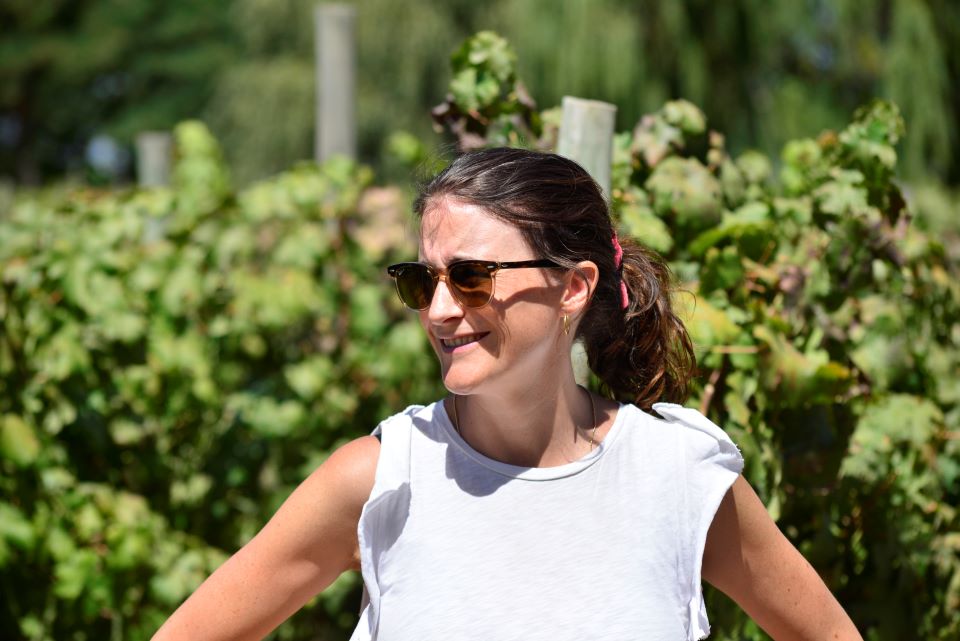
The oenologist Emily
Faulconer runs Viña Carmen, based in Maipo. She's making a stylish series of
wines using grapes from old vines and long-established producers in other
regions.
Small Producers, Big Ideas
For more hotbeds of creativity in Chile, it’s worth looking to small producers. They contribute a wide range of ideas, experimenting enthusiastically as they await their butterfly moment. They are to be found producing Italian and Mediterranean varieties, “Aliens to Chile that contribute plenty of structure and not much weight,” as the oenologist Andrés Sánchez describes them, or adopting ancestral techniques such as zaranda straining, or modern ones such as the use of dry ice and concrete Galileo spheres.
Many of these wines don’t find their way beyond the country’s borders.
To offer an idea, in Marchigüe, Colchagua, I visited an experimental winery called Incubadora de Innovación para la Vid y el Olivo (Innovation Incubator for Vines and Olives, IIVO). There, they ferment grapes from about twenty producers exploring all manner of different varieties, none of whom crafts more than 5,000 bottles. Then there’s Movi, who promotes the wines of independent producers, from whom I tasted 150 labels this year.
Of all these, I’d single out orange wines made with Muscat of Alexandria from Itata. The technique was used in colonial times but now adds a new dimension to modern whites with an original flavor profile that includes basil and Muscat aromas. Similar things are being done with Cinsault, Garnacha and Monastrell, albeit with results of varying quality. And it’s not just small producers: larger wineries such as Viña Carmen and De Martino are also experimenting with this style.
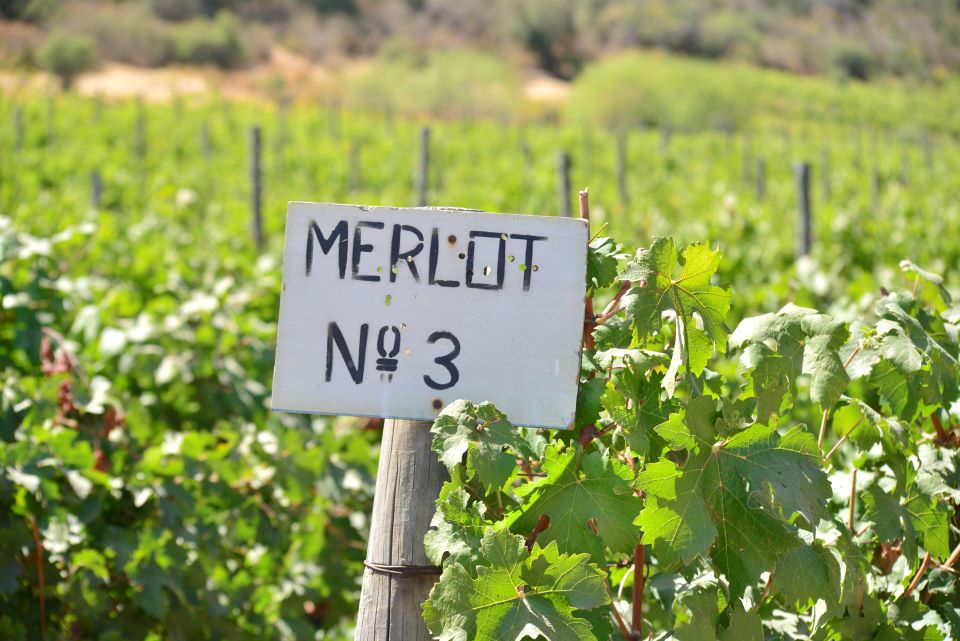
The sign should have read “This isn’t Merlot” in this vineyard belonging to the Muñoz family in Colchagua because the vines are Carménère. The sign is the result of a misidentification only discovered in 1994.
Meanwhile, in the deep south, an entirely distinctive vision is taking shape in Traiguén, about 250 miles south of Santiago. A series of vineyards planted in the 1990s, such as those belonging to Aquitania, lie alongside newer ones planted by Vinos Baettig. These pockets of vines sit near 100 hectares planted in volcanic soils that are already producing high-class Chardonnays and Pinots. Indigenous communities hotly contest ownership of the land in this region, but maybe the 2022 Pinot Noir Tayu Vineyard run by Viña San Pedro offers a way forward: 22.5 hectares are tended to by the Buchahueico and Hueico Chico communities, with a good minimum price for the grapes guaranteed for the next ten years. It seems a promising and unprecedented model for growth across the region.
An invisible common thread runs throughout Chile between new and old styles, classical and newer regions. If you pull on it, the many different flavor profiles to be found in the country will unfold. And perhaps that’s what we need to do: simply observe as we wait for the butterflies Montes mentioned to settle on the chosen producers. And while which ones these will be is always going to be difficult to anticipate, in the meantime, readers can try them out for themselves: the bottles are there, ready and waiting.
© 2023, Vinous. No portion of this article may be copied, shared or re-distributed without prior consent from Vinous. Doing so is not only a violation of our copyright, but also threatens the survival of independent wine criticism.
You Might Also Enjoy
The Harvest in Chile: A Two-Sided Vintage, Joaquín Hidalgo, May 2023
Viñedo Chadwick: 21 Years of Cabernet Sauvignon from Puente Alto, Joaquín Hidalgo, August 2022
A Quarter of a Century in Chile: A Vertical Tasting of Seña, Joaquín Hidalgo, June 2022
Chile in Transition, Joaquín Hidalgo, June 2022
Chile: Pensando Fuera de la Caja
JOAQUÍN HIDALGO | 06 JUNO 2023
Apalta, Chile, una mañana de marzo. Hasta recién una ceja de niebla decoraba el cordón montañoso que le da nombre a esta región de Colchagua. Desde allá arriba el bosque nativo, con litres, peumos y quillayes, muy verdes incluso al final de la estación seca, perfumaba el aire. De la mitad de la ladera hacia abajo, las viñas armaban un patchwork de hileras verdes sobre un suelo rojizo.
Esta pequeña Denominación de Origen condensa todo lo que ofrece Chile a la hora de las copas. Por un lado, viñas de escala como Montes, Neyén, Clos Apalta, Carmen y Ventisquero están aquí. Por otro, una serie de pequeños y añosos viñedos de productores, como los que llevan con celo las familias Cánepa, Muñoz y Quijada. Eran ellos lo que estaban a comienzos de la década de 1990 cuando este rincón de Colchagua comenzó su ascenso meteórico hasta la cima de los tintos de Chile.
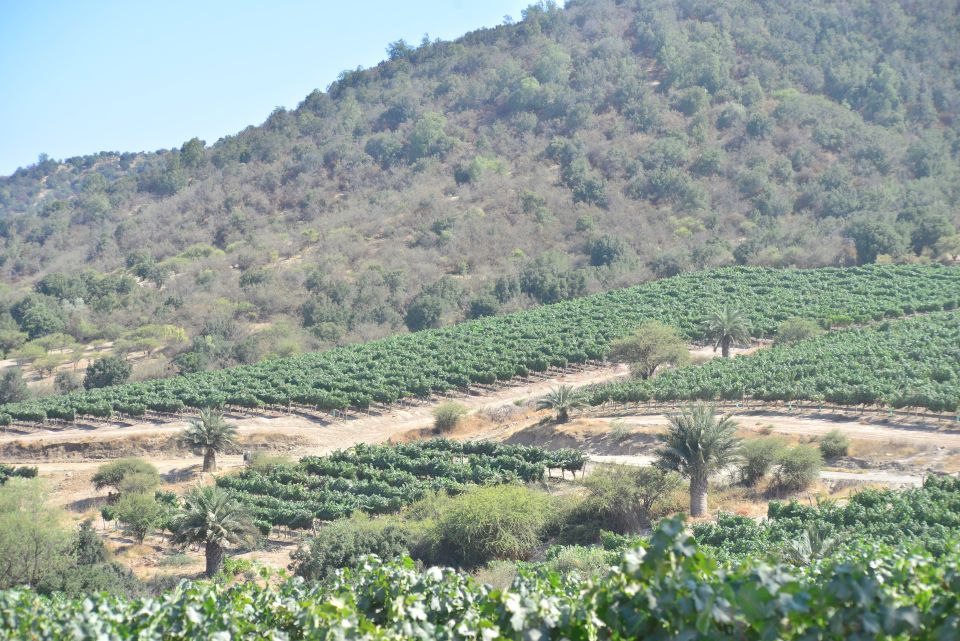
La topografía de la Cordillera de la Costa puede ir desde un lomaje suave en Itata a quebradas encerradas como la de que se ve en la foto, en Cachapoal. Al fondo se aprecia la ladera sur del cerro, la más fresca y, por lo tanto, con una abundante y verde bosque nativo incluso al final de la estación seca.
Entre las hileras de viñedos, recientemente también afloraron algunos hoteles y barrios. El crecimiento inmobiliario atrajo a este grupo de compradores que buscan un rincón rural conectado al mundo. Todo eso lo hizo el vino en este anfiteatro natural del Valle central.
Aquella mañana de marzo, sobre el final de mi viaje, me quedaba clara una cosa: entre la tradición y la transformación constante, el vino en Chile se debate por encontrar un rumbo que los contenga a todos. Un Chile que está vinculado al mundo y desarrolla el negocio de exportación y otro que late a un ritmo doméstico, que comercializa las uvas y las botellas en el mercado doméstico.
Fue cuando le pregunté a Aurelio Montes, un prócer del vino en Chile, con 74 años, 52 vendimias a cuestas y presidente de Wines of Chile, lo que parecía una tontería: “Con tu experiencia –le dije– y viendo cómo se transformó Apalta en estos años, ¿cuál creés que es el verdadero negocio del vino en Chile?”.
Montes dudó un instante.
“No sé bien cuál es la respuesta a tu pregunta”, dijo. “Pero te voy a decir lo que me decía un monje franciscano amigo mío hace muchos años y que hoy me hace mucho sentido. En la vida, el éxito, el dinero y la felicidad son como las mariposas: cuánto más las persigues, más se alejan de ti, pero basta que te quedes quieto para que se posen en tu hombro”.
Sentí que no me lo decía a mi. Sino a una audiencia basta, grande como la industria del vino chilena.
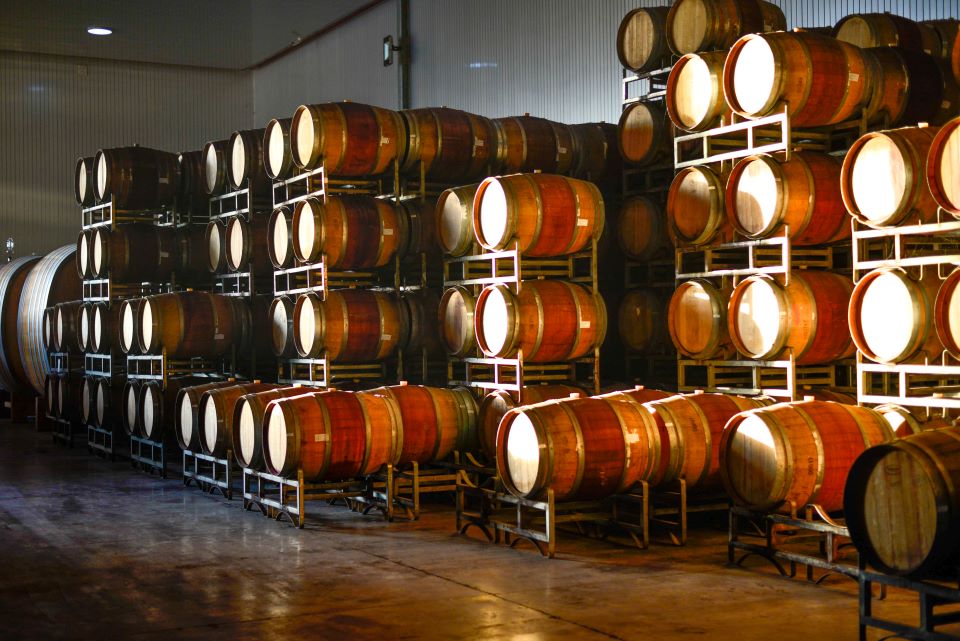
La sala de crianzas en bodega De Martino una tarde de febrero. Además de barricas y barricones usados, tienen una colección de toneles y foudres que se aprecian atrás. La tendencia en Chile es a un uso racional de las maderas.
Varios Caminos Nuevos
Los productores de Chile sienten una suerte de ansiedad porque sus vinos resultan cada vez menos interesantes para el gran público. Algo con lo que cualquiera podría estar de acuerdo, siempre que no se tome la molestia de probarlos en detalle. Y mientras más intentan dar con las tendencias que abran los mercados, más cosas fascinantes suceden fuera de ese foco.
Por eso la metáfora de la mariposa fue tan luminosa.
Después de recorrer unos 4.500 kilómetros, probar más de mil cien vinos y visitar unas cuarenta bodegas y viñedos como hice para este reporte, hoy pienso que lo más interesante en materia de vinos sucede fuera de la caja del negocio. Mientras una parte mueve la rueda de las ventas y se agita con razón para dar con el punto de fuga, hay otra que investiga pacientemente en las muchas variables de los terruños, los estilos y las ideas para dar con vinos que sugieran nuevos paisajes gustativos.
Dentro de la caja están los tintos maduros y golosos de los que Chile vende mucho hasta los 12 dólares. Fuera de esa caja están los estilos secos y vibrantes de blancos, los tintos sedosos y ceñidos de la costa o esos otros tintos profundos y de cierta concentración del secano interior que sin embargo están lejos de ser dulces. Vinos que ofrecen otro paladar y que incitan al bebedor experimentado a descubrirlos.
Este es mi cuarto informe sobre Chile para Vinous. A lo largo de este tiempo, he desarrollado un conocimiento más matizado de las diferentes regiones como también he conocido a muchos productores que siguen sus convicciones para introducir nuevos estilos y perfiles. En general, pienso que los vinos de Chile están mejorando por estas nuevas ideas y enfoques, y esto se refleja en mis puntuaciones. Otro factor que contribuye en esa línea es que muchos de los vinos de este reporte provienen de un año fresco, el 2021, y su efecto maravilloso: hay una serie de botellas que reflejan este nuevo ideario que realmente vale la pena probar.
A continuación, profundizo más en estas tendencias por región.
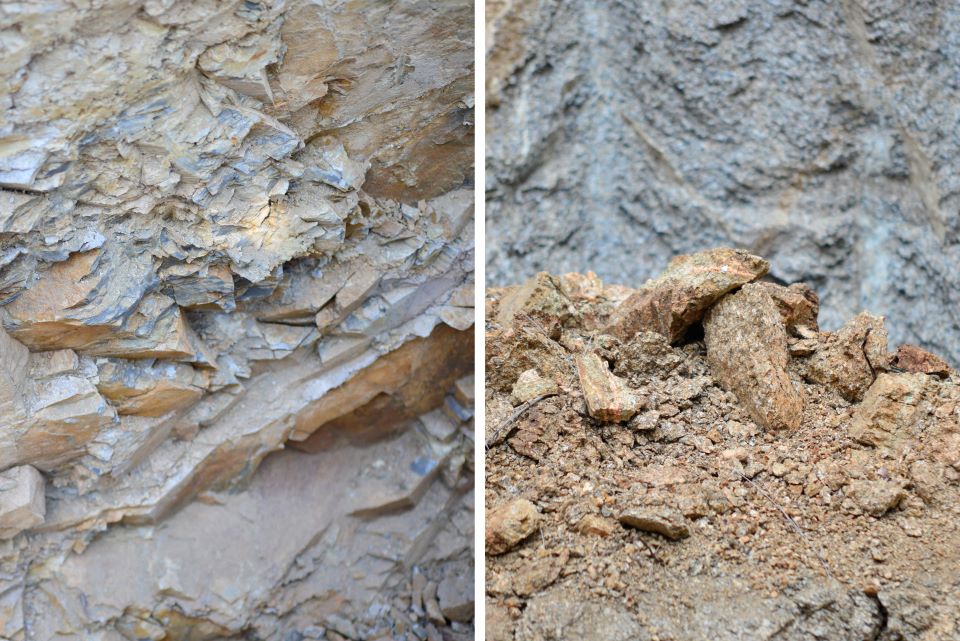
Los suelos de la cordillera de la costa son de granitos meteorizados, como los de del Viñedo Belén, de Viña Morandé, plantado Casablanca (derecha), conocidos en Chile como maicillos. A lo largo de la misma formación, sin embargo, hay suelos de pizarras y esquistos, como también este fragmento (izquierda) que corresponde a un raro suelo volcánico metamorfoseado en el Viñedo La Cornellana, Viña La Rosa, en Peumo.
Maule, Itata y el Secano
La Región del Maule es el mejor ejemplo de esta idea. Ubicada a unos 200 kilómetros al sur de Santiago es la zona más extensa en cultivos de vid para Chile, con unas 52,8 mil hectáreas, 1/3 de las cuáles están en secano. Con 20 Denominaciones de Origen, Maule encierra realidades muy diferentes: comprende un valle rico y fértil como Curicó y también las pendientes arcillosas del secano. Son dos países diferentes en materia de sabor.
En una mañana probé catorce VIGNO, los vinos de la asociación de Viñadores de Carignan, que emplean viñas viejas y en secano, elaborados casi todos a contar de viñedos de productores en las comunas de San Javier de Loncomilla (8700ha) y Cauquenes (7600ha). Ambas pertenecen al secano interior de la Cordillera de la Costa, es decir, un área sin riego donde las lluvias alcanzaban los buenos años y ahora sólo en los muy buenos. Por eso las viñas viejas son importantes. El Carignan ofrece tintos con notas de guinda y un paladar de una elevada acidez que vibra en la quijada, con fina tanicidad.
De esa misma área probé luego cantidad de vinos, concentrados por el suelo y el clima, que alcanzan en la fresca añada 2021 sus mejores expresiones, como Hacedor de Mundos Cabernet Franc 2019, Undugarra Field Blend 2021 o Baettig Los Compadres Cabernet Sauvignon 2022.
El mismo día, pero por la tarde, ascendí a la comuna de Empedrado (51ha), dentro del secano costero. Una zona de montañas boscosas, con mejor régimen de lluvias y donde el mar pone paños fríos al clima. En el viñedo de Miguel Torres, una serie de terrazas labrada en el granito, probé una vertical de Escaleras de Empedrado Pinot Noir, desde 2012 a 2019, cuyo paladar vertical da una idea de lo fría que es la zona. También de Empedrado degusté País y Carignan con bocas más delgadas y de fruta precisa elaborados por Garage Wine Co. Provienen del Viñedo Truquilemu, labrados a caballo y donde las plantas son largamente más añosas que las personas que las trabajan.
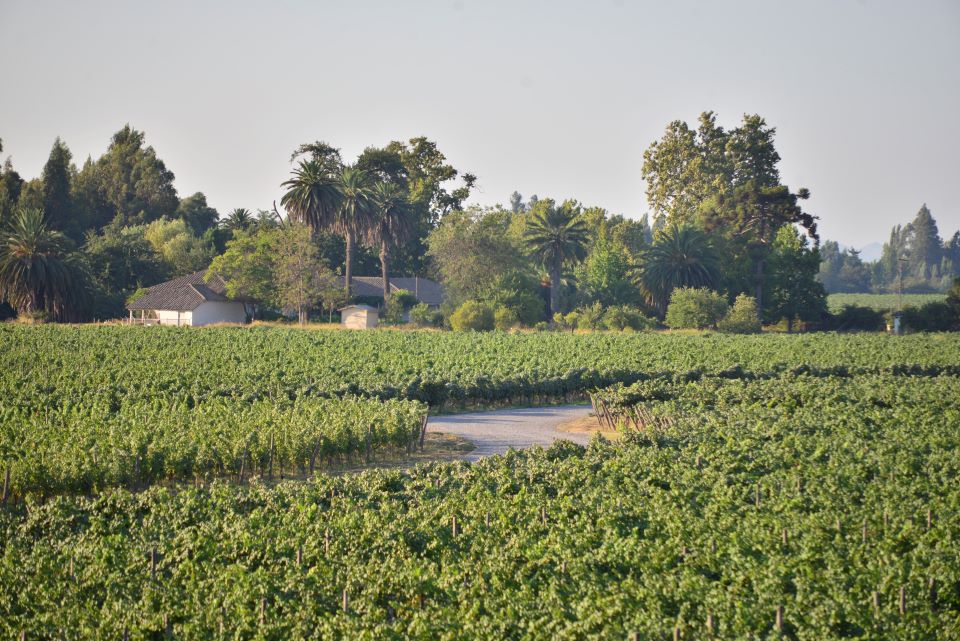
En Colchagua, justo donde el estero Chimbarongo y el río Tinguinirica se juntan, se forman una llanura de profundos suelos arcillosos. Allí está el viñedo Viña Los Maquis. Con un manejo menos restrictivo respecto al pasado en la casa lograron un salto cualitativo en sus Cabernet Sauvignon y Franc.
Una Cordillera para Descubrir
Tanto San Javier de Loncomilla, Cauquenes como Empedrado están dentro de una amplia unidad de terroir que es la usina de los nuevos vinos de Chile: la combinación que forman La Cordillera de La Costa y sus suelos de granito, con diversas exposiciones gracias a la topografía cambiante, que sumados a la fría corriente oceánica de Humboldt se imbrican en una zona fresca desde Biobío e Itata en el sur, pasando por Maule, Leyda, Casablanca y estirándose hasta Limarí. Nada menos que 750 kilómetros lineales de costa entre Concepción y La Serena, una extensa región que cambia de biomas desde el bosque perenne al desierto árido con una condición general de suelos y temperaturas.
Lo de “usina de nuevos vinos” es una manera de decir. Ya que, entre Maule, Itata y Biobio forman un entramado rural donde la vid se cultiva desde el siglo XVIII, en particular la cepa País. Conocida también como Mission, Criolla o Listán Prieto, según sea Estados Unidos, Argentina o España, la cepa País –como le llaman aquí– es una uva que llegó en tiempos coloniales. Rústica y resistente, sabe convivir con las condiciones extremas del secano, ya que las viñas exploran con raíces profundas.
En Chile hay unas 10,5 mil hectáreas de País, particularmente plantadas en las regiones mencionadas más arriba, y los productores se encuentran en una búsqueda estilística. Los hay desde tintos ligeros y frutados, que recuerdan a un Pinot Noir desalineado, como los que embotella el colectivo de Almaule, a los moderados y precisos como A Los Viñateros Bravos País Granítico 2022 y Bouchon País Viejo 2022, hasta licoroso y más potentes como los que produce Águila de Itata 2021 y Rojo Paraíso 2021. Si no todos los País son interesantes debido a su tanicidad, hay que decir que aquellos que logran moderarla encienden la curiosidad y despiertan la sed, al tiempo que ofrecen otro paladar para Chile.
De Maule a Biobío se puede hablar de una viticultura que en Chile gustan llamar patrimonial, donde el bosque nativo perfuma los vinos con nota de boldo y un tono de garrigue. En tanto que, hacia el Norte, donde la falta de lluvias convierte el agua en un factor determinante, es todo lo contrario: el dominio de la técnica y la precisión abre la cerradura de unos terroir atractivos y de aromas puros.
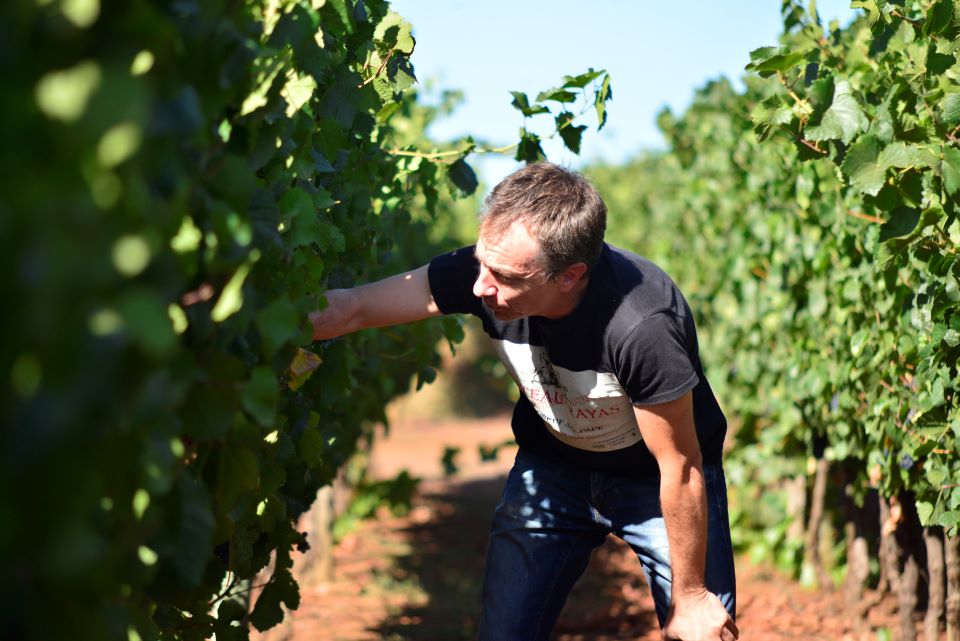
El enólogo Francisco Baettig en el Viñedo Los Primos, Traiguén, a ochenta kilómetros de la ciudad de Temuco. Es una zona fría donde Pinot Noir y Chardonnay ofrecen nuevos matices, como lo demuestran los vinos de Baettig, Aquitania y Tayu. La matriz de suelos es volcánica.
Blancos Costeros
Los valles de la Cordillera de la Costa que se extienden al oeste y norte de Santiago ofrecen un panorama distintivo en sabor. Casablanca puede ser de los más conocidos, porque es el más viejo, desarrollado desde la década de 1990 como un terroir principalmente de blancos (5 mil hectáreas en total, 3800 de blancos). Son cinco valles ramificados: si el sector de Las Dichas al este es el más frío, La Vinilla al oeste es el más cálido.
Casablanca se encuentra en un proceso de refundación. La falta de agua de los últimos años se hizo sentir en los malos materiales genéticos plantados de Pinot Noir y Chardonnay que a la fecha están en replantación. Buen ejemplo de ello lo vi en el Campo Belén de viña Morandé o en las colinas que rodean a Casas del Bosque. El Sauvignon Blanc (2200ha), en cambio, ofrece perfiles cítricos y de ruda en general, con pizcas tropicales. Buenos ejemplos son EQ Sauvignon Blanc 2022, Casas del Bosque La Cantera 2022 y Ritual Sauvignon Blanc 2022.
Leyda, no muy lejos de allí, da cuenta de la quinta parte de Casablanca en superficie, con unas mil hectáreas. Fue plantada en la segunda parte de la década de 2000 y la genética empleada fue mejor y las técnicas son más precisas. Amén de que Leyda es un balcón al Pacífico, tan cercano que se diría que la espuma de las olas llega hasta las primeras viñas. El Sauvignon Blanc (770ha) saca el mejor partido de las mañanas nubladas y de las tardes de sol directo de la costa, plantado en suelos de granitos arcillosos: ofrece una matriz de ají amarillo y ruda que emociona con una acidez elevada en un paladar de buen graso. Amayna Cordón Huinca 2022 y Leyda Lot 4 2022 son ejemplos perfectos de esta condición y están lejos de ser los únicos.
Limarí, unos 350 kilómetros al norte de Santiago, es un barrio muy exclusivo donde tienen domicilio los nuevos Chardonnay (780ha). Aquí, al desierto costero se le suma una condición de suelo: buena parte de la región tiene calizas de origen marino. De modo que a una aromática de zona fría y solar –manzana verde y una pizca de crema de choclo– le suma un paladar salino y de tiza, como los que ofrecen Talinay Caliza Chardonnay 2022 y Amelia Chardonnay 2021. El mismo carácter se extiende a Huasco, un lunar de viñas más al norte y ya dentro del desierto de Atacama, que aporta una nota salada a los vinos, como sucede con Tara Chardonnay 2021 y De Mai Chardonnay 2022.
A las variedades mencionadas en la costa debo reservarle un lugar el Syrah. Un vino poco valorado que se luce en estas condiciones de terroir. Algunos ofrecen un paladar esquelético para la variedad con una fruta fresca lograda y especias, como sucede con Casa Marín Litoral Syrah 2013, que corre como la seda gracias a una acidez elevada. Otros suman un carácter balsámico y de pimienta, además de cárnico y sanguíneo propio de los suelos ricos en hierro, como Matetic Syrah 2021 o Montes Outer Limits Syrah 2022. En una línea exótica por la altura de los Andes, Tococo Syrah 2021, en Alcohuaz, dentro del valle de Elqui, toca alguna cumbre de sabor.
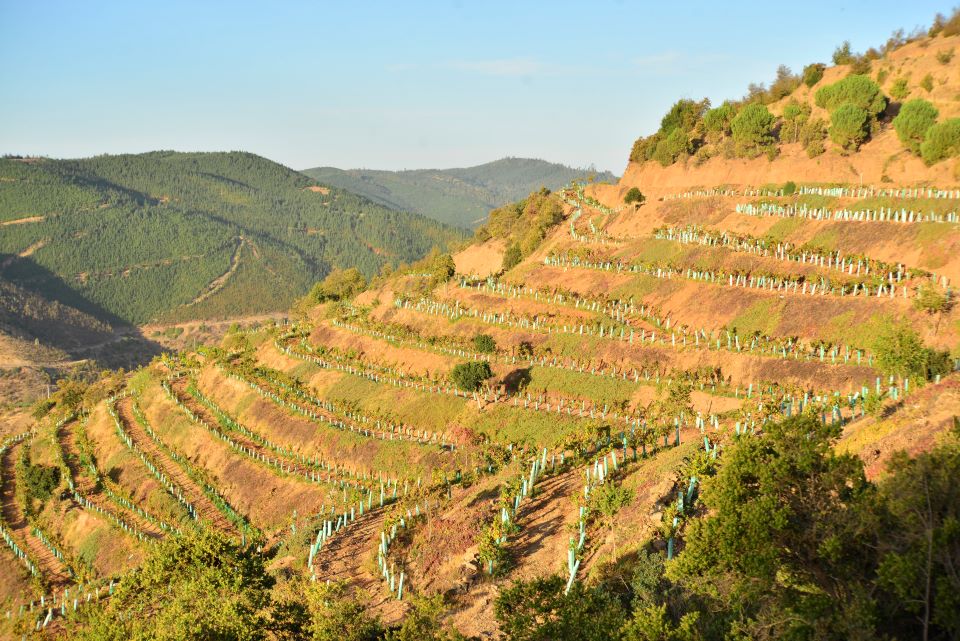
En Empedrado, Región del Maule, la española Miguel Torres plantó en 1995 un viñedo en terrazas con exposición Norte. Es una zona fría de influencia oceánica sobre suelos de pizarras en la Cordillera de la Costa. Debió ser replantado luego del incendio forestal de 2017, por eso la viña conserva las polainas.
Nuevo Paradigma Tinto
La región Libertador Bernardo O’Higgins es la segunda más plantada en Chile con 41,5 mil hectáreas, mayoría de tintas. Nadie en el mundo del vino la conoce con ese nombre, porque sus dos valles principales son más famosos: Colchagua y Cachapoal, que en conjunto forman el Valle de Rapel. Este año le puse mucho foco. Buscaba entenderlas al detalle y las recorrí de punta a punta. Diferentes, tienen un factor común: los tintos son mayormente sucrosos y apretados de taninos.
En Colchagua, por ejemplo, se elabora Carménère (3800ha) y Cabernet Sauvignon (11000ha) desde Los Lingues en la cordillera de Los Andes hasta Marchigüe y Pumanque en la Cordillera de la Costa. En un trayecto de 100 km la vid está plantada desde laderas de Los Andes –como Viña Koyle en Los Lingues– a los cerros graníticos –como los de Luis Felipe Edwards en Puquillay o los de Montes y Ventisquero en Apalta– y exposiciones tan variadas como las peladas caras que dan al norte (calientes) y las boscosas que miran al sur (frías). Pero también en llanos donde ríos meandrosos depositaron capas y capas de arcillas, ya en comunas más calurosas como Santa Cruz o Peralillo. Para decirlo en pocas palabras, Colchagua es una unidad de difícil sistematización con un simple vistazo.
Precisamente por eso ahí las cosas están cambiando. Cuando visité viña Los Maquis, por ejemplo, me encontré con un ajuste estilístico que empieza a hacer mella entre otros productores. Con el enólogo Rodrigo Romero lo habíamos discutido hace tres años: la regla estilística era exigirles menores rendimientos a los viñedos para concentrarlos, algo que no era una situación genuina en la zona, que naturalmente ofrece concentración. El nuevo ideario va por otro lado. Vinos de balance que, sumados a una extracción juiciosa, ofrece un perfil de tintos que libera el sabor y pone el acento en sus singularidades. El resultado se disfruta en las copas: Maquis Viola Carménère 2019, Floresta Carménère 2020, Caliterra Carménère 2020 y Dagaz Carménère 2020 son buenos ejemplos.
En Cachapoal sucede algo similar con los taninos para las mismas variedades. El desafío de trabarlos al detalle lo tienen bien claro en Concha y Toro, cuya bodega está en Peumo, justo a mitad de camino. Allí, con viñedos sobre suelos arcillosos y con buena disponibilidad de agua, el secreto para madurar el Carménère está en no apretar los vinos aún cuando los cosechen tan tarde como fines de abril. En una añada como la 2021, que fue fresca, la región asciende tres escalones cualitativos y consigue una rica nitidez. Marzio Ramírez, enólogo al frente de la operación, me dijo: “Fue la añada perfecta para nuestro estilo”. En el valle esa sentencia corre para todas las escalas: desde un productor pequeño como Serendipia Carménère 2021, hasta Cornellana Vulcano Sedimentario Carménère 2021 elaborado por Viña La Rosa.
El trabajo realizado por La Rosa lleva hoy la región a un límite de reinvención. Luego de mapear todos los suelos del campo, que tiene unas 630 hectáreas, segmentaron las elaboraciones según los materiales de origen para cada suelo: entre granitos, volcánicos y sedimentarios. Así nacen unos vinos que dan cuenta de otros paladares para Cachapoal. Es el ejemplo más completo, pero está lejos de ser el único, ya que la viticultura de precisión ajustada a los suelos es un nuevo paradigma en la zona. Otra vez, el contraste entre lo establecido y lo que está fuera de la caja aporta un nuevo y atractivo matiz.
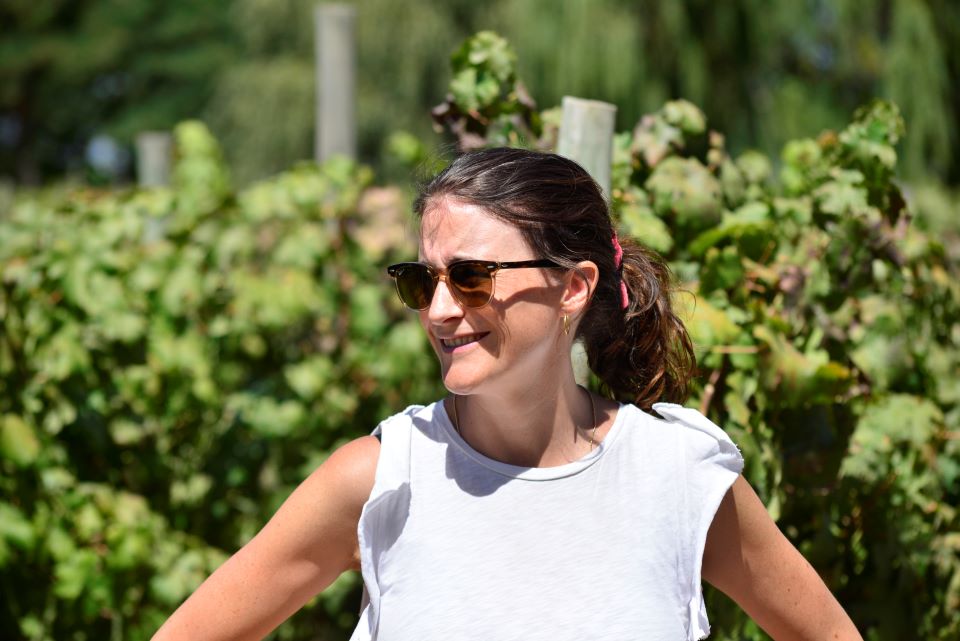
La enóloga Emily Faulconer está al frente de Viña Carmen con base en Maipo. Con uvas de viñas viejas y de productores de otras regiones lleva adelante una serie de vinos de otro cuño.
Pequeños Productores, Grandes Ideas
La otra usina estilística de Chile hay que buscarla entre los pequeños productores. Ellos aportan un amplio ideario en plena exploración y a la espera de su momento mariposa. Elaboran desde variedades italianas a mediterráneas –“esos extraterrestres en Chile que dan estructura y poco peso”, como las definió el enólogo Andrés Sánchez–, emplean técnicas ancestrales como la zaranda y modernas como el hielo seco y las esferas galileo de hormigón.
Muchos de estos vinos no llegan fronteras afuera.
Un ejemplo. En Marchigüe, Colchagua, visité una bodega experimental llamada Incubadora de Innovación para la Vid y el Olivo (IIVO). En ella fermentan una veintena de productores que exploran vertientes de todo tipo y ninguno llega a producir 5 mil botellas. O bien el trabajo que realiza MOVI en la promoción de los vinos de productores independientes, que reconoce escalas bien diferentes y de los que probé unas 150 etiquetas este año.
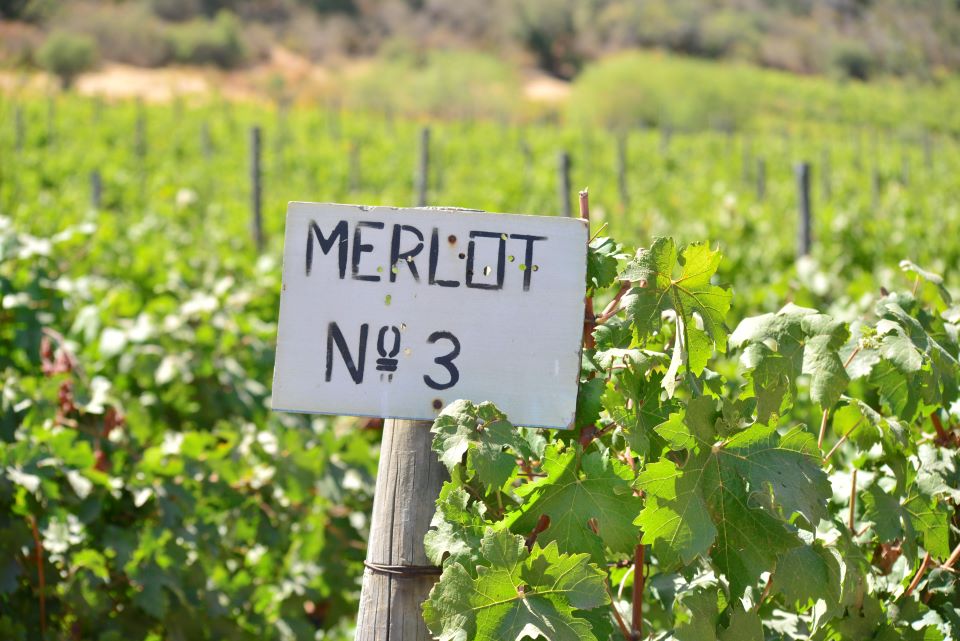
“Esto no es un
Merlot”, podría rezar este cartel en el viñedo de la familia Muñoz en
Colchagua, ya que las viñas que nombra son en realidad Carménère. El cartel
demuestra con claridad, sin embargo, cuál era la situación hasta que se
identificó una variedad de otra 1994.
Con todo, en los vinos Naranjos de Moscatel de Alejandría elaborados en Itata se da una interesante movida: la técnica era usada en tiempos coloniales y hoy ofrece una vertiente moderna de blancos con una paleta completamente distintiva, con aromas de albahaca y muscat. Algo parecido sucede con Cinsault, Garnacha y Monastrel, que exploran con resultados dispar. Y no solo productores pequeños: desde viña Carmen a De Martino también exploran estas versiones.
Entre tanto, el sur profundo ofrece una visión particular. Visité en Traiguén, unos 600 kilómetros al sur de Santiago, una serie de viñedos plantados desde la década de 1990, como el de Aquitania, o el más nuevos de Vinos Baettig. Esos lunares de viña suman 100 hectáreas plantadas sobre suelos volcánicos y representan una avanzada que cuaja ya con Chardonnay y Pinot de alto vuelo. En una zona de elevada conflictividad con las comunidades originarias por el uso de la tierra, quizás Tayu de Viña San Pedro ofrezca una versión con vistas al futuro: desarrolló 22.5 ha de viña con las comunidades de Buchahueico y Hueico Chico, a las que les garantiza un elevado precio mínimo de compra por diez años. Una posibilidad de crecer inaudita para la zona.
Entre los nuevos y los viejos estilos de Chile, entre las zonas clásicas y las nuevas hay un invisible hilo conductor. Si se tira de él se hilvanan los muchos paisajes gustativos de Chile. Quizás nada más haya que sentarse a observarlo y dejar que la mariposa de la que hablaba Montes los elija. Si esa es la parte difícil de prever, al menos por ahora, los lectores pueden probarlas. Las botellas están ahí, listas y esperando.
© 2023, Vinous. Ninguna parte de este artículo puede ser copiada, compartida o redistribuida sin el consentimiento previo de Vinous. Si se incurriese en ello, no solo se viola nuestro copyright, sino que también se amenaza la supervivencia de la crítica independiente de vinos.
También Podrías Disfrutar
Vendimia en Chile: un Año, dos Realidades, Joaquín Hidalgo, may 2023
Viñedo Chadwick: 21 años del Cabernet Sauvignon de Puente Alto, Joaquín Hidalgo, August 2022
Un Cuarto de Siglo en Chile: un Tasting Vertical de Seña, agosto 2022
Chile en la Transición, Joaquín Hidalgo, junio 2022
Show all the wines (sorted by score)
- 7Colores
- Almaviva
- A Los Viñateros Bravos
- Anakena Wines
- Ana María Cumsille
- Anuk Wines
- Aresti
- Baron Philippe de Rothschild Chile
- Barricas De Cauquenes
- Bodegas Tagua Tagua Spa
- Bouchon
- Calcu
- Callma
- Carmen
- Casa Marín
- Casas del Bosque
- Casa Silva
- Chono
- Clos Apalta
- Clos de Luz
- Clos du Lican
- Cono Sur
- Coquus
- Cousiño Macul
- Dakél
- De Martino
- Donoso Group
- D´Sagredo
- El Cuento
- El Rito EcoAgricola
- Emiliana Organic Vineyards
- Espiritu De Chile
- Flaherty Wines
- Garage Wine Co.
- Garcés Silva
- Gillmore
- Gonzalo Guzmán
- Hacienda Chada
- Haras de Pirque
- Invina
- Itata Paraíso Wines
- Jabber Wines
- Juan Pablo Martin
- Lagar de Codegua
- La Playa Wines
- Lapostolle
- La Ronciere
- Las Veletas
- Laura Hartwig
- Le Coq
- Longaví
- Los Vascos
- Mancura
- Maquis
- Marcelo Retamale & European Cellars
- Matetic Vineyards
- Maturana Winery
- Maurizio Garibaldi
- Miguel Torres
- Montes Wines
- MontGras
- Morandé
- Moretta Wines
- Mujer Andina Wines
- Neyen Apalta Estate
- Odfjell
- Ovni Wines
- OWM
- Pandolfi Price
- P.S. Garcia
- Puertecillo Winery
- Reta
- Rogue Vine
- San Jose de Apalta
- Santa Rita
- Seña
- Serendipia
- Siegel
- Susurros De Tumuñan
- Sutil
- SVPT
- Tabali
- Tatié
- TerraNoble
- Terra Pura
- Torreón de Paredes
- Trapi del bueno
- Trapi del Bueno
- Ungrafted
- Valdivieso
- Ventisquero Wine Estates
- Vigno
- Vik
- Viña Aquitania
- Viña Arboleda
- Viña Arturo Pérez Rojas
- Viña Caliterra
- Viña Casa Bauzá
- Viña Concha y Toro
- Viña Concha Y Toro
- Viña Dagaz
- Viña Don Melchor
- Viña Errázuriz
- Viña Estampa
- Viña Folatre
- Viña Gandolini
- Viña Hacienda Araucano
- Viña Koyle
- Viña La Causa
- Viña La Reserva de Caliboro
- Viña La Rosa
- Viña Leyda
- Viña Los Boldos
- Viña Luis Felipe Edwards
- Viña Mujeres Itata
- Viña Polkura
- Viña Prado
- Viña Punti Ferrer
- Viña Raíces de Chintú
- Viña San Esteban
- Viña San Pedro
- Viña Santa Ema
- Viña Sierras de Bellavista
- Viñas Ineditas Terroir Sonoro
- Viña Sur Andino
- Viña Tarapacá
- Viña Trabun
- Viña Undurraga
- Viña Ventolera
- Viña Vistamar
- Viña Vultur
- Viñedo Chadwick
- Viñedos de Alcohuaz
- Viñedos Veramonte
- Vinos 3 Monos
- Vinos Baettig
- Vinos Peroli
- Viteno
- Viu Manent
- William Fèvre Chile
- Zaranda
